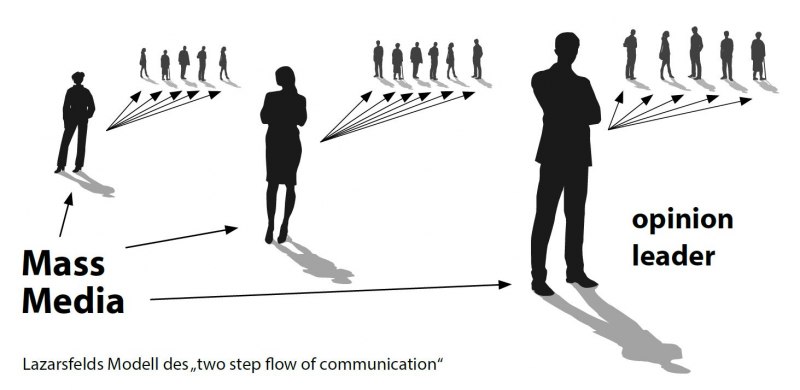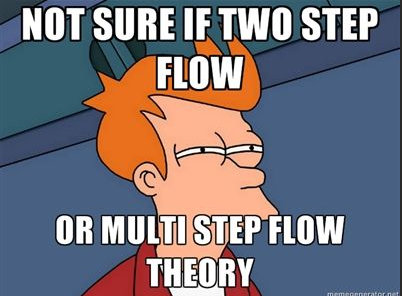
It was introduced in 1944 by sociologists Paul Felix Lazarsfeld, Bernard Berelson, and Hazel Gaudet in their book The People’s Choice: How Voters Make Up Their Minds in Presidential Campaigns. And elaborated by Elihu Katz and Lazarsfeld in the 1955 book Personal Influence: The Part Played by People in the Flow of Mass Communications and subsequent publications.

Nowadays, with the rapid development of the Internet, a new “two-step communication flow for the Internet age” has emerged. Internet users → network opinion leaders → mass media, which is the first level of communication. Mass media → traditional opinion leaders → the public, which is the second quarter of communication.
This shows that opinion leaders play a crucial role in the dissemination of information.

However, as the new model evolved, new shortcomings arose. The first problem is the lack of information feedback; it is often difficult for opinion leaders to receive information feedback from the public, which makes communication one-way.
The second point is that the public relies too much on the guidance of opinion leaders to act, which can lead to another problem – the creation of pseudo-opinion leaders. Pseudo-opinion leaders take advantage of the public’s dependence and their limited access to information. For example, during the period of China’s new coronary pneumonia, some pseudo-opinion leaders took advantage of the public’s fear and dependence to sell ineffective medicines, which led to buying spree by the public.

The last point is that the strong development of the mass media challenges the role of opinion leaders. With the advancement of technology and the Internet, the general public has direct access to information on the Internet without having to rely on opinion leaders, or rather, everyone can be an opinion leader.
All of this is making it harder and harder to be an opinion leader, but I also believe that in the future these problems will be solved.

